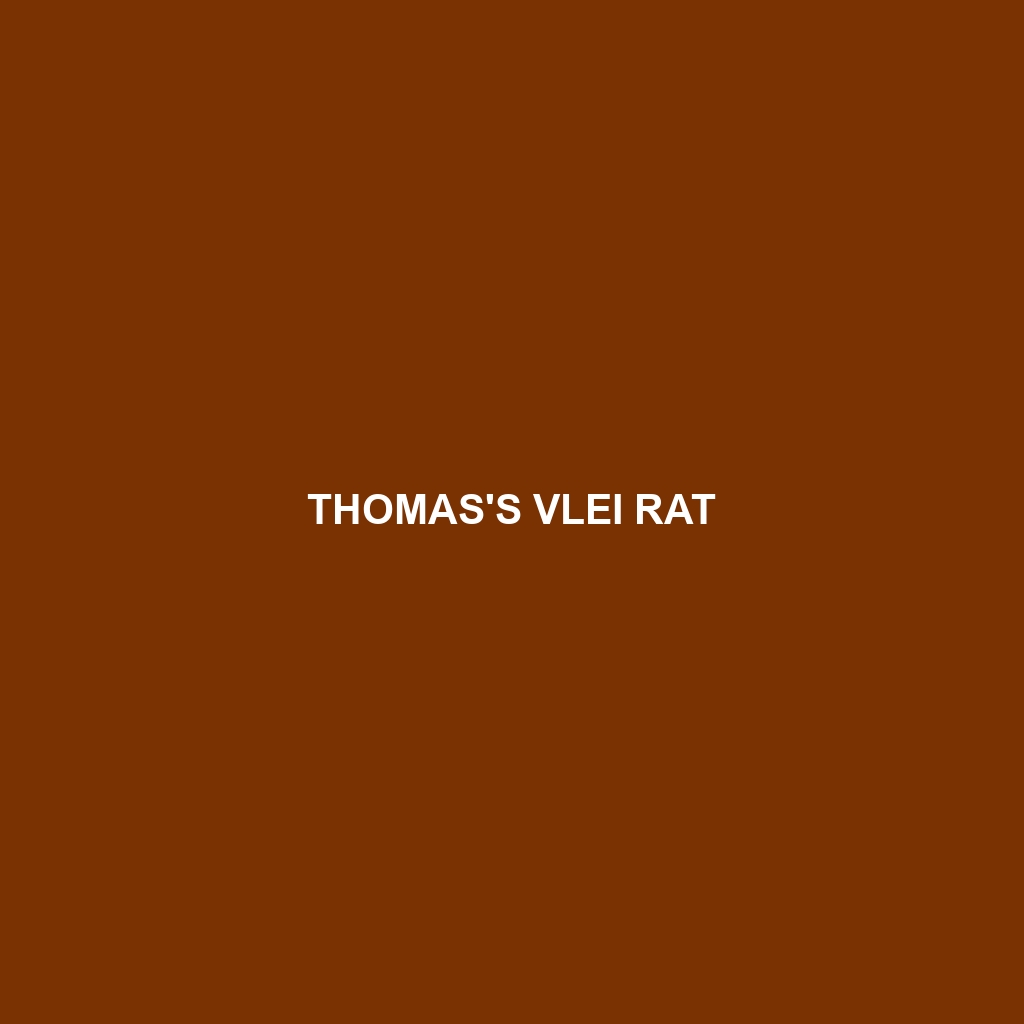Species Description: Thomas’s Vlei Rat
Common Name: Thomas’s Vlei Rat
Scientific Name:
Habitat
Thomas’s Vlei Rat is primarily found in the wetlands of the southeastern coast of Africa, particularly within the regions of South Africa and Swaziland. They thrive in marshy grasslands, sedgelands, and areas with abundant aquatic vegetation, making them highly dependent on their natural habitat for survival.
Physical Characteristics
This small rodent typically measures between 200 to 250 millimeters in body length, excluding the tail, which can be nearly as long as the body itself. It exhibits a soft, dense, dark brown fur with lighter underparts and possesses a long, cylindrical body shape. One distinctive feature is its large ears and whiskers, which aid in sensory perception, making the Thomas’s Vlei Rat adept at navigating its often dense habitat.
Behavior
Thomas’s Vlei Rat is primarily nocturnal, engaging in activity during the night to avoid daytime predators. These rodents are known for their social structure, often living in small family groups. They display unique behaviors, including nest-building using grasses and reeds, and are excellent swimmers, utilizing bodies of water for escape and foraging.
Diet
The diet of Thomas’s Vlei Rat is herbivorous, consisting mainly of grasses, seeds, and aquatic plants. They are particularly fond of the tender shoots found in their moist, marshy habitats. This species plays a crucial role in the ecosystem by dispersing seeds and contributing to plant health through their feeding habits.
Reproduction
Thomas’s Vlei Rat has a breeding season that peaks from late spring to early summer. Females typically give birth to a litter of 3 to 6 offspring after a gestation period of about 24 days. The young are born blind and hairless, but they grow quickly and are weaned within weeks. Maternal care is vital during this early stage, with the female often protecting the young from potential threats.
Conservation Status
The current conservation status of Thomas’s Vlei Rat is classified as vulnerable due to habitat loss from agricultural expansion and urban development. Conservation efforts are crucial to protect their remaining natural habitats and ensure the survival of this unique species.
Interesting Facts
One fascinating aspect of Thomas’s Vlei Rat is its ability to swim efficiently, a skill it shares with few other rodents. Their presence is often an indicator of healthy wetland ecosystems, and studies suggest they may have a unique form of communication involving a series of soft vocalizations.
Role in Ecosystem
In the ecosystem, Thomas’s Vlei Rat serves as both herbivore and prey. By feeding on various plant materials, they contribute to the control of vegetation and promote biodiversity. Additionally, they are an important food source for larger predators, including birds of prey and snakes, thereby playing a crucial role in the food web.
